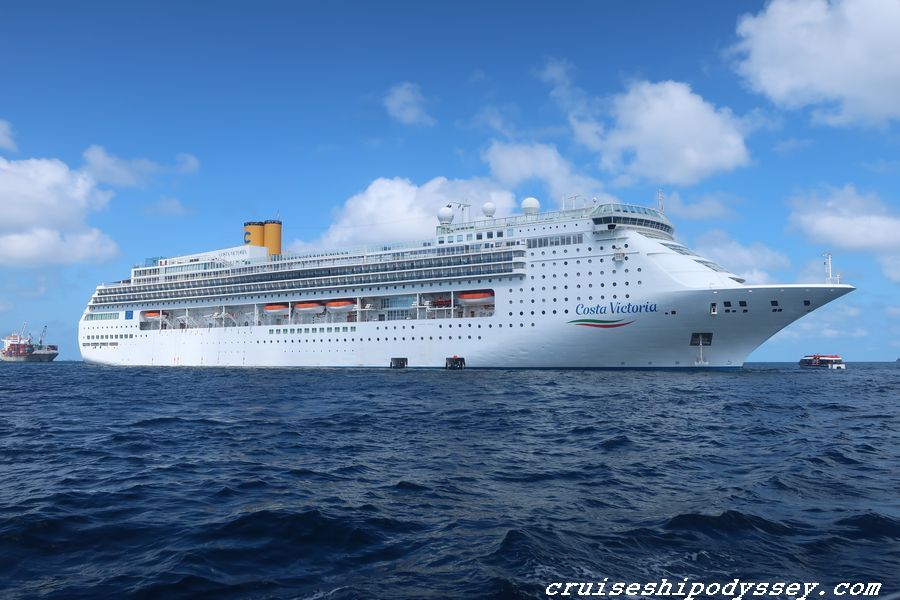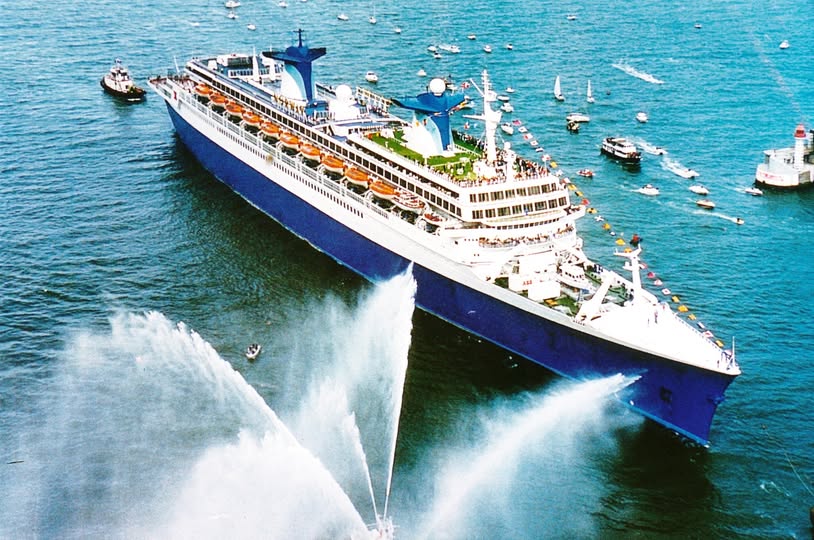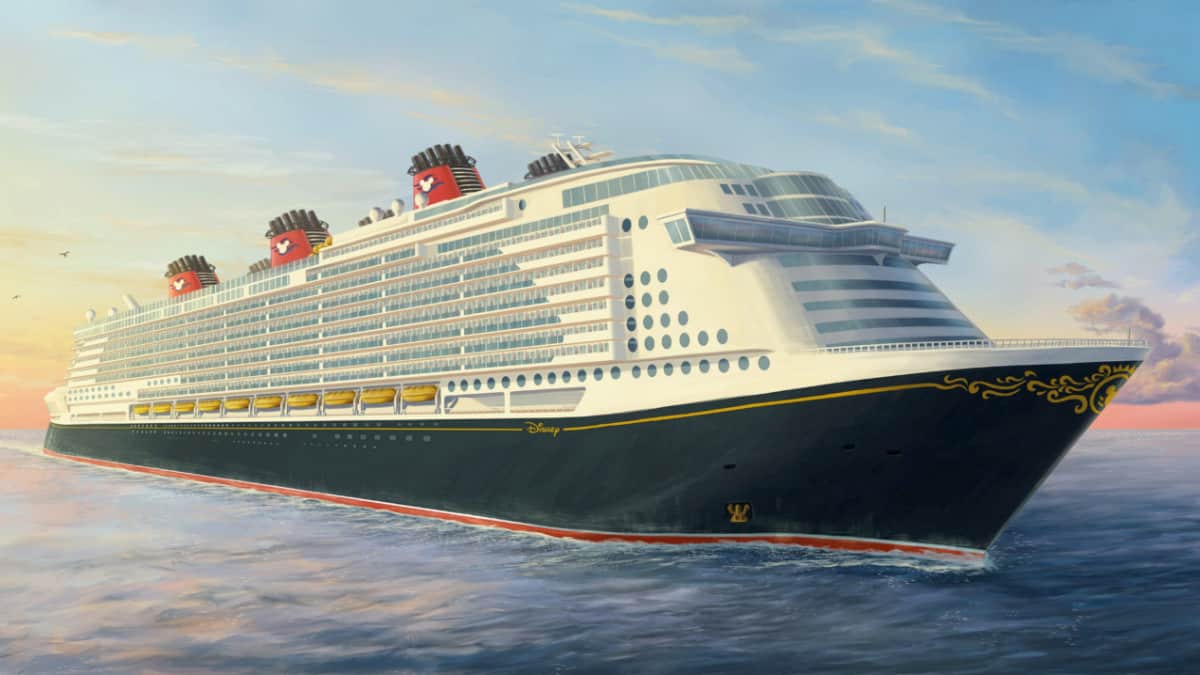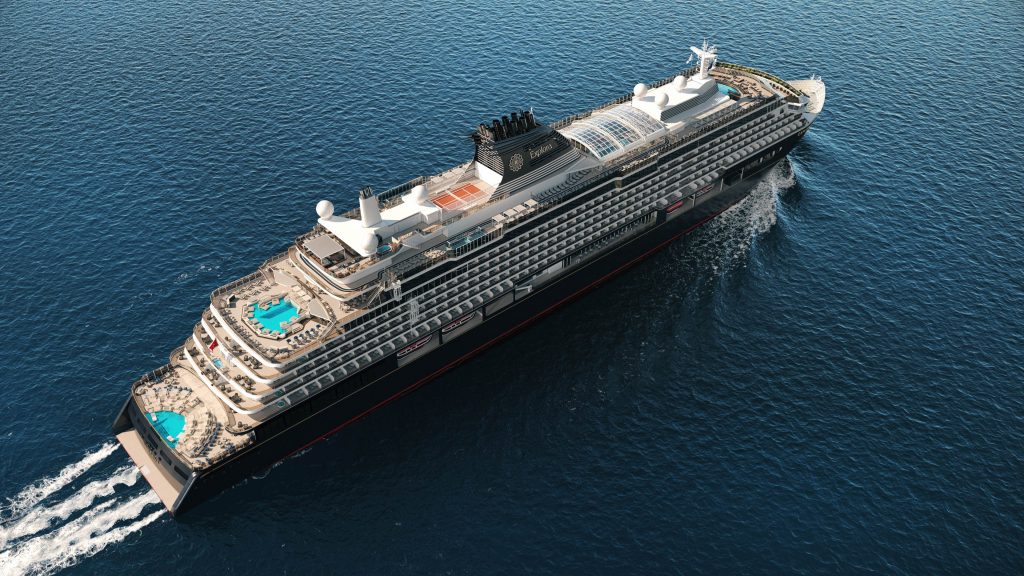Costa Victoria interior photographs page https://www.cruiseshipodyssey.com/cruiseships/costa-victoria/
After Costa Classica (1991) and Costa Romantica (1993) had been taken into service, Costa Cruises decided to expand further by ordering a second pair of newbuildings in 1993. September 2 1995, the first of these vessels, Costa Victoria was launched. With these new ships, Costa aimed to increase their capacity in the Mediterranean -their most important sailing area- as well as in the Caribbean, the company’s second important market.
Both Costa Classica and Romantica had been designed (hull design, funnels, interior decorations) with classic ocean liners in mind, but with Costa Victoria this changed as she was a modern cruise ship. Bremer Vulkan yard located in Vegesack, Germany built her, at the time she was the largest ship ever built by Bremer Vulkan and the largest one in Germany.

She measured 75,160 GRT, had a length of 252 metres, a beam of 32 metres and a draft of 8 metres, her passenger capacity was 1928 (lower berth) looked after by 765 crew. Costa Victoria was fitted with a diesel-electric configuration consisting of six diesels (three 6-cylinder and three 7-cylinder engines) powering electric motors giving her a service speed of 24 knots. Sea trials in February and July 1996 went smoothly and she was handed over to Costa in July 1996. She was named by Carla Costa, one of the female members of the Costa family on July 13, 1996. Since the company had always been family owned, it was a tradition that a member of the Costa family did the honours (until the Carnival take-over). Two weeks later on July 28 she departed on her first cruise from Venice. She was positioned in the Mediterranean during the summer and shifted to the Caribbean during wintertime (starting November 10, 1996).
Meanwhile a sister to Costa Victoria had been ordered and construction of Costa Olympia had already started, but when she was only partly complete, Bremer Vulkan went out of business in 1996. To finish her, building costs would be much higher than anticipated so Costa backed out and the one third complete hull was ultimately sold to Norwegian Cruise Line in 1999. Lloyd Werft in Bemerhaven completed her as Norwegian Sky. A near sister, a second Sun-class vessel would be built next, the Norwegian Sun (2001).

Costa Victoria became known for her Concorde Plaza, a three-deck high lounge/ bar with a dance floor and her two balconies which had magnificent views over her bows. Being all the way forward, this was a quite a novelty those days and it has never been repeated since. The V-shaped group of windows under her bridge made Costa Victoria instantly recognizable.
The ship’s focal point was her 7-deck atrium Atrio Planetarium featuring glass-walled elevators and floor-to-ceiling windows. Live music entertainment enlivened the mood at its lowest level where Bar Planetarium was situated.
For dining Costa Victoria had two main dining rooms, both located on deck 5, Ristorante Fantasia and Ristorante Sinfonia. Both offered two fixed dinner seatings, flexible dining was not available. Its casual restaurant was the Buffet Bolero, open for all daily meals and afternoon tea.

A smaller vessel by today’s standards, Costa Victoria lacked the spectacular amenities of today’s mega-ships, she featured the more “standard” facilities like the Giardino d’Invierno lounge, the Winter Garden, the night club Discoteca Rock Star, the Grand Bar Orpheus with live music and dancefloor , the wine bar Capriccio Lounge & Bar, the outdoor Bar Sirena, the 2-level main show lounge and theatre Teatro Festival, the casino Monte Carlo, for shopping the Portobello Market, the art gallery Galleria Montmartre, the Terme Pompei Spa and finally the library and internet café the Biblioteca and the wedding chapel.
As far as her interiors were concerned, they were not really “spot on” so to speak, as after her fleetmates Costa Classica and Costa Romantica which had been decorated with a nod to the ocean liners of yesteryears, Costa wanted to bring the Italian flair back to their ships, but they didn’t really succeed on board Costa Victoria. Although all of her public spaces had Italian names as did her 11 passenger decks (named after Italian operas), it was only her Pompei-style spa that really showed her Italian origins Ships that followed her after the take-over by Carnival Corp. all had the obvious Farcus-touch, being glitzy and colorful inside, and only recently with vessels like Costa Smeralda entering service, true Italian-influences are back in the line’s ship interiors.

As already mentioned, Costa Victoria divided her time between the Mediterranean and the Caribbean until the winters of 2007 and 2008, when she switched to the Red Sea instead of the Caribbean. Winter 2009 she repositioned to South America. In May 2012, the ship was based at Shanghai for 33 cruises, calling at ports in Japan, Singapore, Vietnam, South Korea and China. Costa Cruises had big plans for expansion in the Orient and being the first western cruise line sailing in the region, they were actually supported by the Chinese government. Costa Victoria sailed on several fasion-themed cruises which were promoted by China’s first supermodel and fashion designer Mary Ma. She would mainly operate from Singapore and Hong Kong until 2018. After a summer spent in the Mediterranean she repositioned to Male, capitil of the Maldives for a series of 8-day cruises to Sri Lanka, Goa and Mumbai and vice versa. This would be her last sailings before she was taken out of service March 2021 because of the COVID-19 pandemic.
In 2004, she had been extensively overhauled and in the process 246 cabins were fitted with balconies. As Costa Victoria was one of the last cruise ships built without balconies this had become a serious problem over time as passengers of course preferred vessels with balcony-staterooms. So to keep her profitable this had to be addressed. They were added by Lloyd Werft, Bremerhaven to 246 outside cabins on Tosca deck (deck 9) and Norma deck (deck 10) to bring Costa Victoria up to date again, Also, outside walking promenades were added to Rigoletto deck (deck 11) and her buffet terrace was enlarged. However, after this refit she was still lagging behind when compared to her more luxuriously and boldly decorated fleetmates.
This was finally put right in 2013, when she was refitted again by the Sembcorp Marine Shipyard, Singapore at a cost of 18 million dollars, and this time her public rooms and cabins were redecorated and upgraded to a satisfactory level with new artwork added as well. Although she was in fact being prepared for service in the Asian market, she emerged with a more European, Italian to be exact, flair.

Her final drydock took place in 2018 when mostly routine maintenance was carried out. At Chantier Naval de Marseilles
Her largest staterooms were 6 Window Suites, but she also had 20 smaller suites, 246 balcony cabins, 311 Oceanview staterooms and finally 391 inside cabins.
Costa Victoria’s life was relatively quiet just sailing cruise after cruise. However, during a voyage in November 2014, she did have her moment of glory when sailing between Hong Kong and Sanya Island on the Chinese Sea smoke was spotted at the horizon and she rescued 12 sailors from their burning fishing vessel.
Costa Victoria was used as a floating hotel for the Universiade event at Naples in July 2019 when 1,900 athletes and 38 international delegations were accommodated on board.

At the beginning of the COVID-19 pandemic in March 2020 nearing the end of a repositioning cruise to the Mediterranean, after disembarking in Crete, a female passenger tested positive and immediately all 726 passengers were quarantined. She headed for Civitavecchia instead of Venice, the planned final destination of her cruise where all passengers could ultimately disembark. Sadly, she would never have any fare-paying passengers on board after this day. Costa Victoria went into lay-up and was sold in June 2020, being one of the first victims of the COVID-19 pandemic. Already in 2019, Costa had decided to sell off several of their older and smaller ships which would be replaced by new, much larger vessels like Costa Smeralda and Costa Toscana which are capable of carrying 5,200 (lower berth) guests instead of Costa Victoria’s 1,900. The pandemic speeded up the process of discarding less efficient tonnage. She was sold to Cantieri Navale San Giorgo del Porto for use as an accommodation vessel for shipyard workers of both Chantier Naval de Marseille and T. Mariotti in Genoa both owned by her new owners, but instead she was transferred to their subsidiary Genova Trasporti Marittimi and berthed in Piombino June 13 where she stayed for the next seven months.

It was said her new owners wanted to start scrapping vessels at this location (they had already been involved in scrapping Costa Concordia in Genoa after she had been salvaged) but their plans did not materialize and Costa Victoria slowly decayed to such an extent that she threatened to become more or less unseaworthy in the end. On 13 January 2021 now renamed St. Victoria for her final voyage, she left Piombino, and was towed to nearby Aliaga, Turkey for dismantling. She was finally beached on 28 January 2021. Such a shame for a vessel just 24-years old that had recently been refitted and had many years of service left in her, her career ending so prematurely. I was on board during one of her last cruises from the Maldives via Sri Lanka to India and inside as well as out on deck she was well kept and didn’t look her age at all. I really liked her informal and cozy interiors…such a shame.




